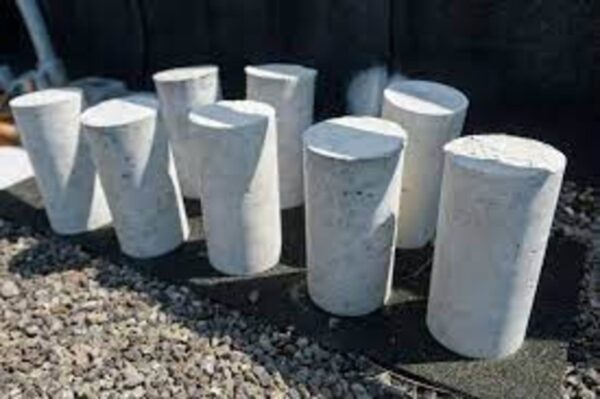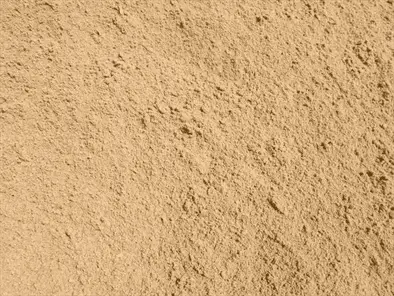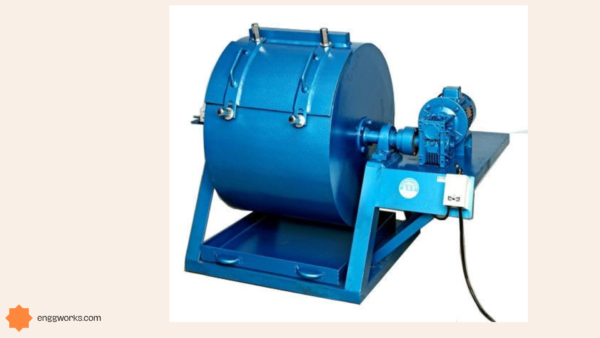Hardened concrete refers to the state of concrete after it has undergone the curing process and has gained its desired strength and durability.
Concrete is one of the most widely used building materials in the world, valued for its strength, durability, and versatility.
However, concrete by itself is relatively brittle and prone to cracking under pressure or impacts.
This is where hardened concrete comes in.
Hardened concrete is concrete that has gone through additional chemical processing to increase its strength and reduce its porosity, making it much more resistant to stresses over time.
There are a few different methods for hardening regular concrete to transform it into an enhanced material.
One way is through the application of silica fume – an ultrafine powder that reacts with the concrete to fill voids and make it denser.
Another technique involves injecting special liquids into the concrete that produce crystalline structures that reinforce it from within.
The third common hardening process forces carbon dioxide gas into the concrete at high pressure.
The gas reacts with the mixture to form durable calcium carbonate crystals.
Each hardening process adds complexity and cost compared to pouring regular concrete, but the upgrades in durability and strength make hardened concrete ideal for uses where long-term abrasion-resistance is a must.
These applications range from industrial floors to pavements to tunnels and dams.

properties of hardened concrete
Here are some of the key properties of hardened concrete:
- High Strength – Hardened concrete has a very high compressive strength, typically ranging from 5,000-10,000 psi depending on the mixture. This allows it to withstand very heavy loads and forces without cracking or failing.
- Impact Resistance – The dense internal structure of hardened concrete makes it extremely resilient against impacts, blows, and shocks. It is much less prone to chipping, cracking, or abrasion from repeated impacts.
- Abrasion Resistance – Hardened concrete surfaces have superior abrasion resistance and hold up well over time against friction, scraping, and erosion. This makes hardened concrete ideal for applications like industrial flooring in factories and processing plants.
- Reduced Porosity – The specialized treatment processes reduce the number and size of pores and voids within the concrete, limiting permeation from water, chlorides, and other corroding substances. This prevents seepage and deterioration.
- Chemical Resistance – With reduced porosity and increased density, hardened concrete has better protection against salt, acids, oils, and other contaminants that can normally penetrate and weaken concrete.
- Thermal Stability – The crystalline structures formed within hardened concrete make it more thermally stable and able to withstand both hot and cold temperatures with less expansion/contraction.
- Extended Durability – The combination of these properties leads to hardened concrete that remains intact and functional decades longer than regular concrete when exposed to weather, use, and environmental factors.
comparison of fresh concrete versus hardened concrete
Fresh Concrete:
- Consists of cement, water, and aggregates mixed together into a plastic, unhardened state
- Can be poured and molded into different shapes
- Has no strength or rigidity in fresh state, supports no load
- Can be transported to job sites in fresh state for pouring
- Curing through hydration reaction causes concrete to harden over time
Hardened Concrete:
- Has undergone the curing and hardening process after initial pouring
- Extremely strong and rigid – has high compressive and tensile strength
- Able to withstand very heavy loads without failure
- Has reduced porosity/permeability compared to uncured concrete
- More resistant to abrasion, impacts, salt, water, acids, and weathering
- Displays some brittle behavior under tension or bending forces
- Very durable over decades – retains strength and resilience
- Slightly more difficult to cut, drill, or modify after hardening
- Surface can be polished, stamped for decorative finishes
The differences essentially come down to concrete in its pre-cured plastic form versus concrete after full hardening.
The chemical changes during curing transform weak, shapeable concrete into one of the strongest, longest-lasting building materials available.
Knowing these key contrasts allows engineers to time the pouring and molding of concrete appropriately.
Properties of hardening concrete
- Air Entrainment – Tiny air bubbles are intentionally incorporated into the concrete mixture. This makes the concrete more resistant to damage from freezing and thawing cycles. The air bubbles provide space for water to expand as it freezes.
- Chemical Additives – Adding compounds like calcium chloride, triethanolamine, or calcium nitrite speeds up the hydration curing reaction of concrete. This produces a denser, stronger matrix. However, too much can make concrete brittle or crack.
- Heat Curing – Applying heat shortens the concrete curing time by accelerating cement hydration and increasing early strength development. This method requires precise temperature and moisture control.
- High Pressure Carbonation – Exposing pre-cast concrete to CO2 gas under intense pressure causes carbonic acid reactions. These create strong calcium carbonate crystals that reinforce the cementitious matrix internally.
- Slurry Infiltration – Forces extremely fine silicon-type liquids into the pores of concrete. As these liquids solidify, they add hardness and abrasion resistance to the concrete from within.
- Vibration – Vibrating freshly poured concrete helps properly settle it within forms and molds, consolidating the mixture and minimizing air bubbles for maximum density.
Proper hardening techniques depend on factors like concrete type, size of the pour, climate conditions, and required properties.
With expertise and controlled procedures, the end result is concrete up to ten times stronger than unconditioned concrete.
main tests that are performed on hardened concrete
- Compressive Strength Test – This involves applying gradually increasing compression force to a concrete sample until failure. The maximum load at failure divided by the cross-sectional area gives the compressive strength measurement in psi or MPa.
- Tensile Strength Test – Tensile strength is measured by subjecting a concrete sample to increasing tensile loading until crack formation. The most common methods are split cylinder testing or beam flexure testing. This indicates behavior under bending or axial stretching loads.
- Shrinkage Testing – Concrete shrinks slightly during the hardening process. Shrinkage measurements quantify volume changes over time during curing. Testing methodologies include dry shrinkage, plastic shrinkage and autogenous shrinkage.
- Water Permeability Testing – Pressurized water is exposed to hardened concrete samples and the depth or rate of penetration is measured. Performance requirements may dictate minimum water permeability levels. Common test methods include AES, IMR and Figg methods.
- Abrasion Resistance Testing – The surface wear resistance is determined by grinding, or applying high-pressure water jets. Mass, depth, or volume loss indicates abrasion resistance. Popular abrasion test methods include ASTM C944 and ASTM C1138.
- Chemical Resistance Testing – Hardened concrete samples are exposed to deicing solutions, acid solutions, sulfuric acid, or petroleum products to simulate chemical spill conditions. Mass change, structural degradation or strength changes are measured.

These and other advanced tests evaluate the performance and durability of concrete for designing structural installations exposed to years of use. They provide quality assurance and validate specific composition mixes.
conclusion
Hardened concrete clearly represents an upgraded version of this ubiquitous building material, offering enhanced qualities that make it suitable for more demanding applications.
Through additional processing like high-pressure treatment with carbon dioxide, or special admixtures, regular concrete can transform into a product with vastly improved strength, abrasion-resistance, and longevity.
While the hardened material costs more initially, the extended lifespan and reduced maintenance require can lead to dramatically lower lifetime costs compared to standard concrete.
The upgraded durability and resilience prevent frequent cracking, crumbling, or staining that might necessitate frequent repairs or replacement.
This advantage manifests itself most substantially in settings like industrial plants, hydroelectric dams, roadways, and marine environments.
Hardened concrete opens up new possibilities for elegant structures with slim designs by eliminating worries about deterioration.
With its protective outer shell and dense internal matrix, it continues looking and performing like new despite decades of traffic, mechanical wear, temperature swings and environmental factors.
As engineers and architects continue innovating with concrete, hardened varieties will unlock ever-more creative and ambitious projects.
The next time you see a striking new bridge, offshore platform, or sleek epoxy-polished floor, it just might be made from high-end concrete enhanced via hardening techniques on the leading edge construction science.
This opens new frontiers for what we can build to last with one of humankind’s most prolific materials.







